Chaja BRODER, née JUDKIEWICZ
Chaja was born in Pizedborg, Poland on April 16, 1897. She was the daughter of Chaim Judkowicz and Esther Rozbzial. Malka Judkowicz
She was married to Salomon Broder, who was born in Zarki, Poland on August 26, 1879. He became a French citizen by virtue of a decree dated December 4, 1926 [1].
Chaja had one son, René, who was born on August 24, 1926 in the 12th district of Paris. He was a born a French citizen because his father was French. Salomon Broder died in 1941.
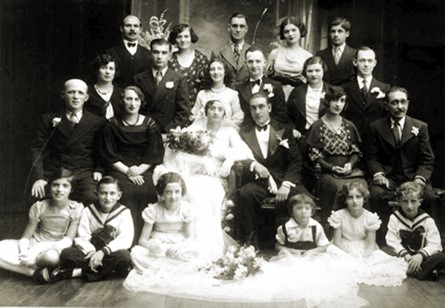
Isabelle Broder and Adrien Pouvil’s wedding photo, taken in 1933 in Paris [2]
(Salomon Broder is in the second row, on the left, with Chaja Broder at his side, and René Broder is in the first row, on the right.)
In July 1944, Chaja was living with her son at 4, rue Wifrid-Laurier in the 14th district of Paris.
Chaja and her son René were arrested on the street, along with some other people, on July 25, 1944 in rue Henri Monnier.
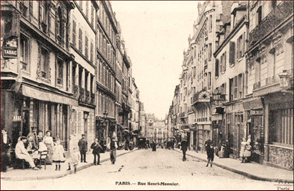
They were taken to the police station on rue de la Banque, in the 2nd district. They were then held overnight in the police depot before being taken to Drancy camp the following day[3]. They stayed in Drancy internment camp from July 26 to July 31, 1944., when they were deported to Auschwitz on Convoy 77 [4]
Chaja was deported on racial and religious grounds, as can be seen in this document, which states ‘Motif Israelite’ (Jewish).
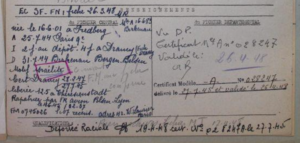
When they got to Auschwitz-Birkenau, Chaja was separated from her son René, forever. At the age of 17, he was killed in the gas chambers soon after they arrived [5].
Chaja Broder survived, as confirmed by this testimony by Chaja and a friend of hers, Renée Laval, another Convoy 77 deportee who survived [6]
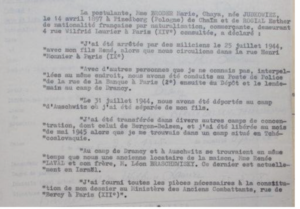
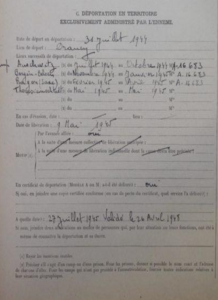
Chaja Broder and Renée Laval’s witness statement [7] Document detailing Chaja Broder’s deportation
The document shows that Chaja was transferred from Auschwitz to various other concentration camps.
Firstly, she was interned in Drancy on July 26, 1944, and then deported to Auschwitz on July 31, 1944.
She stayed in Auschwitz from July to October, 1944. She was then transferred to Bergen-Belsen [8], where she stayed from November 1944 until January 1945. She next appears in the Hagen prison, in Saxony, in February 1945 where she stayed until April 1945 before being sent to Theresienstadt camp [9] in Czechoslovakia, where she arrived at the beginning of May. A few days later, on May 5, she was liberated by the Russians and finally repatriated from Pilsen [10] to Lyon on June 4, 1945.
This was confirmed by Renée Laval, who was also a Convoy 77 deportee.
We were able to find out some more about Chaja Broder’s “travelling companion” [11]. She was born Renée Braschevizky on July 24, 1921 in the 12th district of Paris and she married Maurice Laval on May 23, 1942, in the 14th district. The couple lived at 103, avenue Verdier in Montrouge, in the Hauts de Seine department. They had no children.
Renée was arrested for resistance activity and interned in Drancy camp. She was deported on Convoy 77 and survived the hell of Auschwitz.
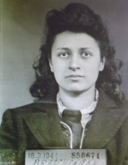
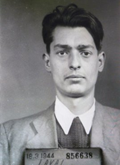
Renée and Maurice Laval
The two women would have known each other before they were deported, in fact, because Renée Laval’s brother Léon Braschevyzki, an optician and Trotskyist activist, [12] rented an apartment at 4, rue Wifrid-Laurier, in the 14th district of Paris, in the same building as Chaja Broder.
Léon was also deported on Convoy 77 on July 31, 1944. He too survived and later moved to Israel.
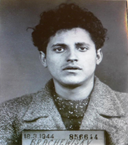
Léon Braschevizkiy, Renée Broder’s brother
When she returned from the camps, Chaja applied to have son officially acknowledged as having died during deportation in Auschwitz [13]. He was only 17 years old. The declaration of death states that he died on July 31, 1944 [14]
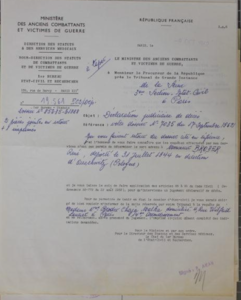
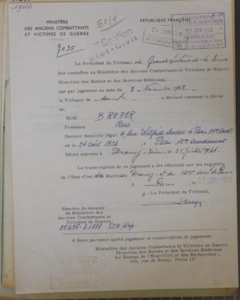
Declaration of the death of René Broder, issued by the Seine court.
Chaja Broder was granted French nationality on May 27, 1947, in accordance with Article 2 of a French law dated January 6, 1945.
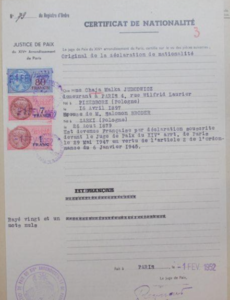
Chaja Broder also sought to be declared a victim of war [15]. With no income, she needed welfare payments. She had great difficulty with this however, since she was unable to obtain a birth certificate, as shown in this document.
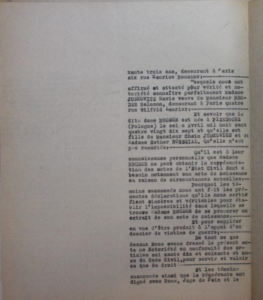
She was finally acknowledged as having been politically deported in October 1954, which enabled her to claim compensation in 1955.
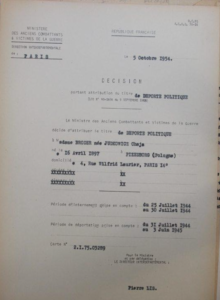
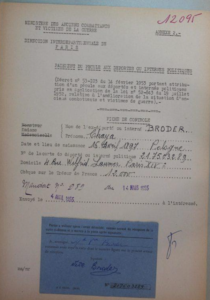
[1] Document provided by the Convoy 77 association. 21 P 718 112 in DAVCC, Caen.
[2] Photograph of “The Brodas/Broders”. Source http://www.dankazez.com/broda-broder
[3] Drancy camp: Drancy was used as an internment and assembly camp for French Jews before they were sent to concentration camps and killing centers. Nearly 63,000 people were deported from Drancy.
[4] Convoy 77 was the last of the large convoys from Drancy to Auschwitz. It left on July 1944, with 1306 people on board.
[5] Auschwitz-Birkenau was a large concentration camp and killing center in Poland. More than 1.1 million Jews were murdered there.
[6] Of more than 1300 people deported on Convoy 77, only 250 (157 women and 93 men) survived
[7] Document provided by the Convoy 77 association, showing Chaja Broder’s journey, from her internment in Drancy to her return to France.
[8] In April 1945, many convoys of deportees were sent to Bergen-Belsen from other camps including Auschwitz, Buchenwald, Dora, and Dachau.
[9] The Theresienstadt concentration camp was located about 40 miles north of Prague. In the last few weeks of the war, thousands of prisoners from other concentration camps were transferred to Theresienstadt, but very few of them (just under one in six) survived.
[10] Pilsen is the capital of Bohemia, a region in the eastern part of the Czech Republic.
[11] Documents found at the Shoah Memorial and https://maitron.fr/spip.php?article211100. We contacted the author of this report but he had no information about Chaja Broder.
[12] Trotskyism is a Marxist political philosophy hat takes its inspiration from Léon Trotski, and his writing, activities and ideas. After 1924, Trotskyist ideology was mainly characterized by its opposition to the Stalinist vision of communism, challenging the reign of bureaucracy and advocating democracy and freedom of debate within the Communist Party.
[13] It is clear to see, on document 1, that the request was made by Chaja Broder, René Broder’s mother.
[14] From 1945 onwards, when it became clear that many deportees had “disappeared”, the families were obliged to request certificates of non-return, which were then followed by declarations of death in lieu of death certificates.
It was decided, arbitrarily, that when drawing up these certificates, the place of death given would be that of the internment camp where the future deportees had been detained (Drancy, Pithiviers etc.), and the date given would be that of the departure of the convoy.
[15] These procedures allowed deportees to obtain an allowance.


 Français
Français Polski
Polski








